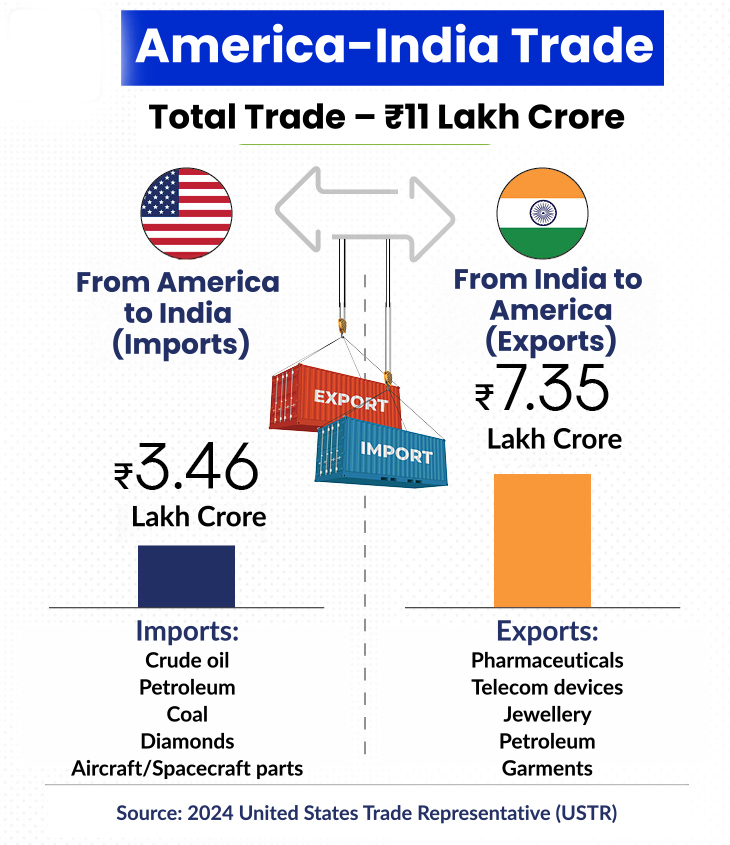Context:
The recent remarks by U.S. President Donald Trump, calling India a “dead economy”, and announcing a 25% tariff along with penalties for India’s energy and defence deals with Russia, have sparked a political and economic debate.
India’s Economic Performance:
Despite criticism, the empirical evidence contradicts Trump’s claim:
- India’s GDP has grown nearly 12 times between 1995 and 2025, according to IMF data.
- This makes India one of the fastest-growing major economies, second only to China.
- In comparison:
- U.S. GDP grew 4 times in the same period.
- UK and Germany saw their GDP expand less than 3 times.
- Japan’s GDP in 2025 is lower than in 1995, reflecting stagnation.
India is not a dead economy. It has shown consistent expansion, climbing from being part of the “Fragile Five” in 2013 to the world’s fifth-largest economy in 2025.
India’s Growing Share in Global Economy
India is among a select few economies (along with China and Russia) that have:
- Expanded their global GDP share relative to the U.S. from 1995 to 2025.
- India’s economy was <5% the size of the U.S. in 1995.
- By 2025, India’s GDP is ~14% the size of the U.S. economy.

Structural Challenges of Indian economy:
While India’s GDP numbers are impressive, they mask deep-rooted challenges:
1. Slowing Growth Rates
- Post-2011, India’s growth dipped from the pre-2008 highs of 8-9% to around 6% in recent years.
- Growth is service-led, not broad-based across agriculture and manufacturing.
2. Manufacturing and Labour Concerns
- Manufacturing has underperformed since 2019-20.
- Failure to create jobs in industry has kept agriculture overburdened.
- Persistent rural distress and underemployment remain pressing concerns.
3. Trade and Global Integration
- India’s goods exports account for just 1.8% of global trade.
- Services exports are stronger at 4.5%, but lack industrial complementarity.
4. Inequality and Poverty
- 24% of India’s population remains below the poverty line.
- Income inequality has surged sharply in the last decade.
5. Human Development Deficit
- Poor outcomes in health, education, and skill development.
- Female labour force participation is among the lowest globally.
- High youth unemployment, especially among the educated, is a ticking time bomb.
Conclusion:
India is clearly not a “dead economy.” Its economic rise over the past 30 years is both measurable and significant on the global stage. However, the quality of growth—its inclusiveness, sustainability, and employment-generating capacity—remains questionable.






